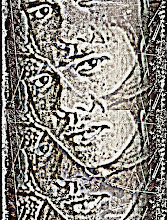Developers Annoyed Over Twitter's New Strategy
Some worry that Twitter's plans may ruin their own.
It has been the question on the lips of Twitter's critics ever since the company launched in 2006: how will the social messaging service ever make money?
| Tweet this: Tweetdeck, shown here on several different devices, is one of many Twitter applications developed by other companies. |
This week's upcoming Chirp conference in San Francisco could finally provide an answer, as the company looks to share its latest plans--and paper over the cracks in its relationship with a legion of independent developers. Alongside more technical details on the previously announced @anywhere platform for integrating Twitter with other websites, speculation suggests that Chirp could see the launch of an advertising system and better geo-location services--possibilities that leading coders are looking forward to hearing about.
"I think Chirp is an opportunity for Twitter to outline its advertising strategy, both for themselves and the ecosystem," says Iain Dodsworth, the creator of popular desktop Twitter client TweetDeck. In addition, he suggests, the company could "discuss how they would want to see it implemented--best practices, tied in with their philosophies on 'not being evil.' "
Convincing developers that Twitter intends no harm may prove more difficult than expected, however, given the events of the past few days. On the surface, at least, it seems that Twitter is departing from its policy of working closely with outside developers and instead choosing to compete directly with them.
On Friday, the company made two surprise announcements. First was the news that it would produce its own client for accessing Twitter via BlackBerry handsets, a move that breaks with the tradition of relying on outside developers to create Twitter tools. Then the company created a minor tremor with the revelation that it would be doing the same for the iPhone by acquiring Atebits, the company behind the popular client Tweetie. This app will be rebadged as "Twitter for iPhone," and Twitter will bring its creator, Loren Brichter, under its wing.
Some reacted angrily to the news.
"Twitter has just kicked all the other developers of Twitter iPhone clients in the teeth," said one developer on a Twitter developer forum. Another responded by putting Tweeterena--a client with some 50,000 users--up for sale on eBay.
Convincing developers that Twitter intends no harm may prove more difficult than expected, however, given the events of the past few days. On the surface, at least, it seems that Twitter is departing from its policy of working closely with outside developers and instead choosing to compete directly with them.
On Friday, the company made two surprise announcements. First was the news that it would produce its own client for accessing Twitter via BlackBerry handsets, a move that breaks with the tradition of relying on outside developers to create Twitter tools. Then the company created a minor tremor with the revelation that it would be doing the same for the iPhone by acquiring Atebits, the company behind the popular client Tweetie. This app will be rebadged as "Twitter for iPhone," and Twitter will bring its creator, Loren Brichter, under its wing.
Some reacted angrily to the news.
"Twitter has just kicked all the other developers of Twitter iPhone clients in the teeth," said one developer on a Twitter developer forum. Another responded by putting Tweeterena--a client with some 50,000 users--up for sale on eBay.
